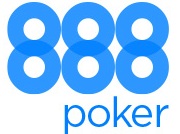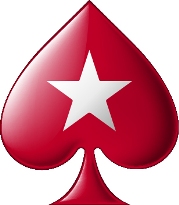Hutchison used Mike Caro’s Poker Probe software to find the winning percentage of selected four-card hands against nine opponents. After he finished running the simulations, he correlated the hand’s winning percentage with characteristics of that hand, such as card rank, suitedness, pairs, and the distance between cards that could be used to make straights. His goal was to create a point count system that approximated the winning percentage for a given hand. He succeeded by assigning points for suited cards, pairs, and cards that can make a straight.
This table summarizes how to assign points for suited cards in the Hutchison system.
Determine the Value of Your Suited Cards |
|
| High Card | Value |
| A | 4 |
| K | 3 |
| Q | 2.5 |
| J | 2 |
| 10, 9 | 1.5 |
| 8-3 | 1 |
| Four cards of the same suit | -2 |
The second step is to assign points to your hand based on any pairs it contains. The table Below lists those point values.
Pairs Add Value to Omaha Hands |
|
| Pair | Value |
| A | 9 |
| K | 8 |
| Q | 7 |
| J, 10 | 6 |
| 9 | 5 |
| 8-4 | 4 |
| 3-2 | 3 |
| Three cards of the same rank | 0 points for the hand |
Finally, you need to take the possibility of making a straight into account. When your hand contains cards of four different ranks, you assign points based on the lowest card in your hand. The table below lists the values.
Point Values for Potential Straights |
|
| Lowest Card | Value |
| J | 14 |
| 10 | 13 |
| 9 | 12 |
| 8 | 11 |
| 7 | 10 |
| 6 | 9 |
| 5-4 | 8 |
| 3 | 7 |
| 2 | 5 |
If there’s more than a two-rank gap between two of your cards, such as when you hold A♥-K♦-Q♠-8♦, where the 9, T, and J fall between the Q♠ and 8♦, subtract one point from the total. For this hand, the total would be 10 points: 11 because the low card is an 8, minus 1 because of the gap of more than two cards.
There are two more cases you need to consider, though. The first case is when your hand contains a pair, which means it has cards of only three different ranks. If your hole cards contain exactly one pair, add six points if all cards are 8 or higher and four points for all other combinations. As before, you should subtract one point if there is more than a tworank gap between any of your cards.
When you have two pairs in the hole, you only have two ranks and far fewer possibilities to make straights. As such, you should add four points when both of your pairs are 8 or higher; otherwise, add two points. Pairs more than one card apart are diffi cult to make the nut straight with, so subtract a point if there’s a gap of more than one card. If one of your pairs is AA, subtract two points to refl ect the Ace’s limited ability to make straights.
Add and subtract points based on the contents of your hand to come up with a total. The total you come up with represents the hand’s approximate winning percentage against nine opponents if everyone stayed through the river. Against nine opponents, you will win one out of every ten pots, or 10 percent of the time. Hutchison recommends playing only those hands with scores of 15 or higher and raising with hands of 20 or higher. In tight games, where only three or four players see the flop, you should strongly consider folding hands with scores of 15–17 when you’re in early position. In loose games, you might relax your requirements a bit and play hands with scores of 13–14 in middle or late position, but those hands are only slightly above average and could cost you a lot of money if the cards don’t fall your way.










